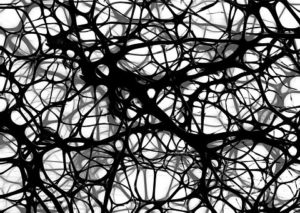POSTED IN: General Info
TAGS: Brain, Health & Nutrition, Parkinson's Disease, Sleep
Share this
 Parkinson’s Awareness month has ended for 2018, but the search for a cure is continuously being sought. The Michael J. Fox Foundation, www.michaeljfox.org is urgently working on a cure. The purpose of setting aside this month of April was to bring awareness to Parkinson’s and to help people become mindful of their well-being. The more information you have on Parkinson’s, the more understanding a person has. Information on exercise, nourishment, stress administration and being aware of medical needs was offered as an introduction to patients with Parkinson’s.
Parkinson’s Awareness month has ended for 2018, but the search for a cure is continuously being sought. The Michael J. Fox Foundation, www.michaeljfox.org is urgently working on a cure. The purpose of setting aside this month of April was to bring awareness to Parkinson’s and to help people become mindful of their well-being. The more information you have on Parkinson’s, the more understanding a person has. Information on exercise, nourishment, stress administration and being aware of medical needs was offered as an introduction to patients with Parkinson’s.
Parkinson’s disease is a progressive disorder of the nervous system that affects your movement. It grows, step by step, in some cases beginning with a scarcely detectable tremor in only one hand. However, while a tremor may be the most known indication of Parkinson’s illness, the issue usually causes stiffness or slow movement. In the early phases of Parkinson’s disease, your face may demonstrate zero articulation or your arms may not swing when you walk. Your speech may become difficult or slurred. The side effects of the disease intensify as your condition advances over the long run. Despite the fact that Parkinson’s disease can’t be cured, drugs might help with improving your symptoms. In periodic cases, your specialist may propose surgery to control certain areas of your brain and control your symptoms.
The variety of symptoms includes motor symptoms, non-motor symptoms and tremors. Primary motor symptoms are: (a) “Resting tremor” in which a tremor appears as a beating or oscillating movement, usually when a person’s muscles are relaxed. (b) Bradykinesia or slow movement; also incomplete movement and walking with short, shuffling steps. It can also occur in facial muscles, reducing a person’s range of facial expressions and resulting in a mask-like appearance. (c) Rigidity means stiffness or inflexibility of the muscles, resulting in decreased range of motion, pain and cramping; often causes inability to swing arms when walking. (d) Postural instability when standing or impaired balance and coordination; increased chance of falling; can also affect speaking and swallowing. Secondary motor symptoms are many and varied but not all people with Parkinson’s will experience all of them. The causes of Parkinson’s disease are also varied, including your genes, environmental triggers and the presence of Lewy bodies. Treatments include physical therapy, occupational therapy, surgery and home treatment.
Current statistics on Parkinson’s follow:
- 60,000 new cases will be diagnosed in the U.S. this year – 1/100 over age 60;
- One million people in the U.S. and five million world-wide have the disease;
- Three out of five Americans will suffer from a nervous system disease;
- Today’s best Parkinson’s drug was discovered back in 1967;
- Early symptoms under investigation are impaired sense of smell, certain sleep disorders, constipation and unusual fatigue;
- Lesser-known symptoms are depression, apathy, fatigue and dementia;
- A side effect of the disease, dyskinesia, is reported to be as debilitating as the disease;
- Death of dopamine cells cause Parkinson’s disease, with 60 to 80% of these cells already lost by the time motor symptoms appear.
Share this
Subscribe to our blog and monthly newsletter.










